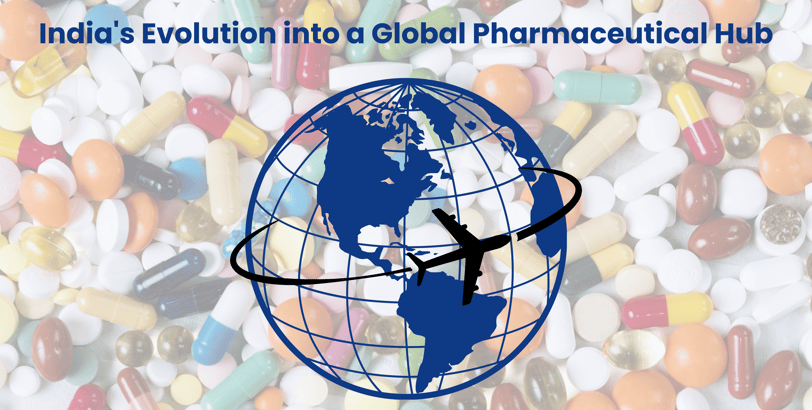India's Evolution into a Global Pharmaceutical Hub
India has emerged as a global powerhouse in the pharmaceutical industry, transitioning from a modest producer of generic drugs to a leading exporter and innovator in the global healthcare landscape. This transformation is a testament to India's robust industrial framework, skilled workforce, and strategic government policies. Let’s delve into the factors that have propelled India to its status as a global pharmaceutical hub.
1/10/20252 min read


A Leading Exporter of Medicines
India’s pharmaceutical exports reached an impressive $27.9 billion in the fiscal year 2023-24, marking a 9.67% growth despite an overall decline in total exports. The United States remains the largest importer of Indian pharmaceutical products, accounting for over 31% of exports. Other key destinations include the United Kingdom and the Netherlands, showcasing India’s global reach and influence.
The Generics and Vaccine Champion
Indian pharmaceutical companies dominate the global generics market, producing high-quality, cost-effective drugs that cater to diverse healthcare needs. The country accounts for nearly 20% of the global supply of generics by volume and an astounding 60% of global vaccine production. During the COVID-19 pandemic, Indian manufacturers demonstrated their prowess by swiftly producing and exporting vaccines to over 150 countries, reinforcing their reputation as the “Pharmacy of the World.”
Key Drivers of Growth
Several factors have propelled India’s rise in the pharmaceutical sector:
Government Policies and Incentives: Initiatives like the Production Linked Incentive (PLI) Scheme and pharmaceutical parks have encouraged innovation and increased manufacturing capacity.
Skilled Workforce: India’s vast pool of scientists, chemists, and engineers provides the expertise required for complex drug manufacturing.
Cost Efficiency: Low production and operational costs enable Indian pharmaceutical companies to compete effectively on a global scale.
Rising Demand: Increasing health awareness and disposable incomes, both domestically and internationally, have boosted demand for Indian pharmaceutical products.
Challenges and Quality Assurance
While India’s pharmaceutical sector continues to thrive, quality control remains a critical challenge. In 2024, inspections by India’s drug regulator revealed that over 36% of inspected drug manufacturing units required shutdowns due to sub-standard practices. Incidents such as the distribution of contaminated cough syrups linked to fatalities in multiple countries underscore the importance of stringent quality measures. Addressing these concerns will be pivotal for India to maintain its global standing. Strengthening regulatory frameworks and ensuring compliance with international standards are essential steps forward.
Focus on Innovation
Indian pharmaceutical companies are shifting focus from generics to innovation in complex drug formulations and biosimilars. To support this transition, the industry has called for government incentives such as tax reliefs and financial assistance. Investments in research and development are expected to drive the next phase of growth, enabling India to contribute not only affordable but also advanced and innovative healthcare solutions.
Future Prospects
The Indian pharmaceutical market, valued at $50 billion, is projected to reach $65 billion by 2024 and $130 billion by 2030. By addressing challenges and fostering innovation, India is well-positioned to sustain its leadership as a global pharmaceutical hub.
Conclusion
India’s evolution into a global pharmaceutical hub reflects its resilience, innovation, and strategic vision. With continued focus on quality assurance, public-private partnerships, and advancements in R&D, India is set to remain at the forefront of the global pharmaceutical industry. As the world’s demand for accessible and quality healthcare solutions grows, India’s role as the “Pharmacy of the World” will only strengthen.
